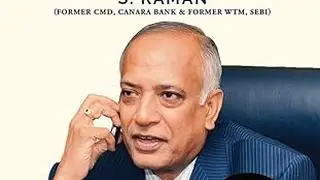Did the Congress party wrest India from the British in 1947 or did the British simply abandon it? Most people believe it was the former. But a few think it was the latter. The ones who subscribe to this view say that in a very large measure it was the naval mutiny of 1946 in Bombay that forced the British to quit India.
Pramod Kapoor, a friend for 47 years, delves deep into the episode. He has provided details that had been more-or-less brushed aside by historians of the former persuasion.
The mutiny itself started for the usual reasons: poor or no pay, bad working conditions, racism etc. what actually triggered it was the deliberate misinformation of stones in the dal served to the ratings.
But what no one could have foreseen was how widespread it would become and what impact it would create. Not to put too fine a point on it, the British simply turned tail and ran. Their fear was that if the rebellion spread to the army that would be it then. After all they had held India at gunpoint for 200 years.
But, as Kapoor reminds us, the Congress party refused to support the sailors. In fact, it condemned the sailors for what they were doing.
The book is full of vignettes which reveal the mutiny in stark relief. Most important is the cast of characters that reads like a who’s who of the Left. Ironically, the Communist Party of India had supported the British throughout the Second World War because Britain and the USSR were allies. That alliance ended with the war.
Kapoor shows in meticulous detail how it all happened. His sketches of the main dramatis personae in itself makes the book worth reading. He has also written about the places where it was all planned and actually happened. To anyone familiar with Bombay, it’s striking that most of them lived in very posh areas.
The rebellion spread at great speed. In just under two days 21 bases and 78 ships had been taken over by the rebels. They replaced the Union Jack with the flags of the Congress and the Muslim League. The two were entwined. In the Navy at least there were no religious divisions.
The British sought to retaliate against with overwhelming force. The rebels threatened to blow away the docks and the Gateway of India. In the end nearly 400 people including civilians were killed. Kapoor describes the events with passion, straight from the heart.
One of the uncomfortable truths of the episode was the dreadful testing of the loyalties of the Indian officers. With one exception, they chose not to support the sailors. As Kapoor says, they had no option. It was a classic case of dharma sankat.
In the end the rebellion was quelled quickly, not least because the Congress and the League, namely Sardar Patel and Jinnah, helped calm things down. But the damage has been done. The rebellion happened in February 1946. The British left in August 1947.
(TCA Srinivasa Raghavan is a senior journalist and author)
About the Book
1946 Royal Indian Navy Mutiny: Last War of Independence
Pramod Kapoor
Roli Books
376 pages ; ₹617 (Hardcover)








Comments
Comments have to be in English, and in full sentences. They cannot be abusive or personal. Please abide by our community guidelines for posting your comments.
We have migrated to a new commenting platform. If you are already a registered user of TheHindu Businessline and logged in, you may continue to engage with our articles. If you do not have an account please register and login to post comments. Users can access their older comments by logging into their accounts on Vuukle.